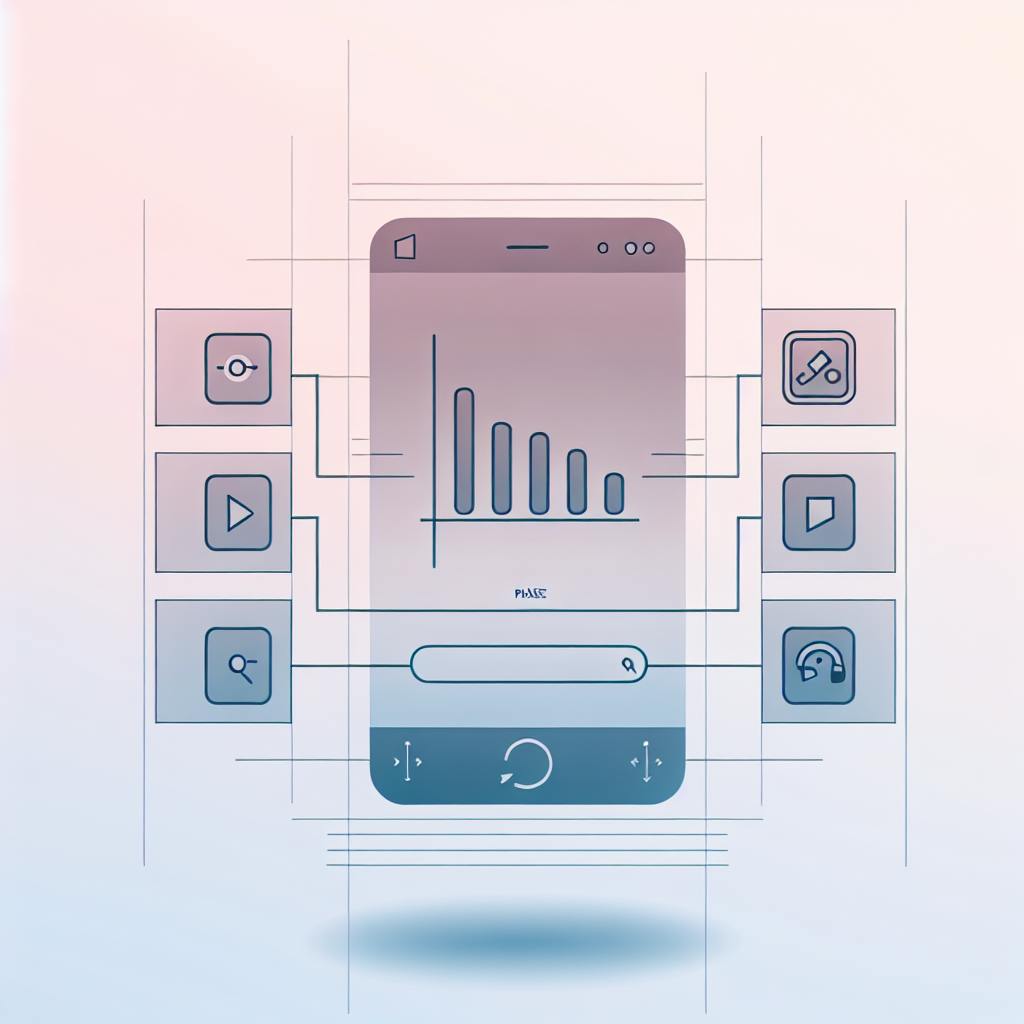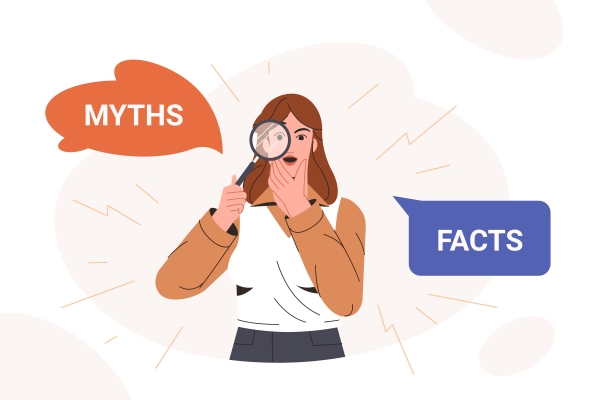Reducing mobile data usage is crucial for enhancing app performance, lowering costs, and contributing to sustainability. Here are the key tips:
- Optimize App Code: Follow efficient coding practices like using efficient data structures, minimizing memory allocation, optimizing loops, and implementing lazy loading.
- Use Data Compression: Compress data using algorithms like Gzip or Brotli to reduce data size and improve loading times.
- Limit Background App Refresh: Disable background data usage for apps to prevent unnecessary data consumption.
- Use Caching: Store frequently accessed data locally to reduce data transfer and improve app performance.
- Optimize Image Loading: Implement techniques like compression, lower resolution options, lazy loading, and format selection to reduce image data usage.
- Use a Content Delivery Network (CDN): Leverage CDNs to cache content on nearby servers, reducing latency and improving performance.
- Minimize Data Transfer: Optimize API calls, use compression, caching, and image optimization to minimize data exchange.
- Implement Data Synchronization: Use sync adapters, incremental updates, caching, and optimized network requests to reduce data transfer.
- Use Push Notifications: Send targeted notifications to minimize the need for users to constantly check the app, reducing data consumption.
- Monitor and Analyze Network Usage: Use tools like Android Studio's Network Profiler, Charles Proxy, or Fiddler to identify areas for optimization and improve data efficiency.
By following these tips, developers can create apps that are optimized for data efficiency, providing a better user experience and contributing to a more sustainable digital ecosystem.
Related video from YouTube
1. Optimize App Code
Optimizing app code is a crucial step in reducing mobile data usage. Well-structured and efficient code can significantly minimize the amount of data transmitted, resulting in faster app performance and lower costs. Here are some tips to optimize your app code:
Efficient Coding Practices
PracticeDescriptionUse Efficient Data StructuresChoose data structures that minimize memory usage and improve data transfer.Minimize Memory AllocationReduce the number of memory allocations to minimize data transfer.Optimize LoopsOptimize loops to reduce the number of iterations and minimize data processing.Use Lazy LoadingLoad data only when necessary to reduce data transfer and improve app performance.
By following these efficient coding practices, you can reduce mobile data usage, improve app performance, and enhance user experience.
Remember, every byte counts, and optimizing your code can make a significant difference in your app's overall performance.
2. Use Data Compression
Data compression is a powerful technique to reduce mobile data usage in apps. By compressing data, you can minimize the amount of data transmitted, resulting in faster app performance, lower costs, and improved user experience.
Faster Loading and Lower Bandwidth Consumption
Compressing data reduces the time it takes to download or upload data from the server, making your app more responsive. For example, Google's WebP image format can reduce image sizes by 25-34% compared to JPEG and PNG.
Choosing the Right Compression Algorithm
You have two main options for compression algorithms: lossless and lossy. Lossless compression retains all data, making it suitable for text and structured data. Lossy compression sacrifices some data for higher compression rates, often used for images and multimedia.
Compression AlgorithmDescriptionLosslessRetains all data, suitable for text and structured data.LossySacrifices some data for higher compression rates, often used for images and multimedia.
Implementing Data Compression
To implement data compression in your app, you can use Android's built-in compression libraries, such as Zlib, or libraries like OkHttp, which provide built-in support for request and response compression.
By using data compression, you can significantly reduce mobile data usage, improve app performance, and enhance user experience. Remember, every byte counts, and optimizing your app's data usage can make a significant difference in your app's overall performance.
3. Limit Background App Refresh
Limiting background app refresh is a crucial step in reducing mobile data usage in apps. When an app is running in the background, it can consume data without your knowledge, leading to unexpected data usage. By limiting background app refresh, you can prevent apps from consuming data unnecessarily.
How to Limit Background App Refresh on Android
To limit background app refresh on Android, follow these steps:
1. Go to Settings > Connections > Data Usage. 2. Select Mobile Data Usage in the Mobile section. 3. Select an App from below the usage graph. 4. Tap Allow background data usage to turn off.
Alternatively, you can also go to Settings > Apps > All apps, select the app you want to disable background data usage for, and toggle off Background data under Mobile data & Wi-Fi.
Benefits of Limiting Background App Refresh
By limiting background app refresh, you can:
- Reduce mobile data usage
- Improve battery life
- Enhance overall app performance
- Gain more control over data usage
Remember, every byte counts, and limiting background app refresh can make a significant difference in your app's overall performance and data usage.
4. Use Caching
Caching is a technique that reduces mobile data usage in apps. It stores frequently accessed data in a temporary storage location, allowing apps to retrieve data quickly and efficiently.
Benefits of Caching
Caching provides several benefits, including:
- Faster Load Times: Caching reduces the time it takes to load content, making your app more responsive.
- Reduced Server Load: By serving cached content, caching reduces the load on your servers.
- Improved Scalability: With reduced server load, caching helps your app handle a larger number of concurrent users without sacrificing performance.
Types of Caching Mechanisms
There are various caching mechanisms you can use in your app development process:
Caching MechanismDescriptionBrowser CachingStores static resources, such as CSS files, JavaScript libraries, and images, locally on a user's device.Database Query CachingStores results of frequently executed database queries in memory, reducing the load on the database server and improving overall app performance.Content Delivery Network (CDN) CachingUtilizes a network of servers strategically located worldwide to cache and serve your app's static content.
By implementing caching mechanisms within your app, you can enhance its performance and deliver a superior user experience.
5. Optimize Image Loading
Optimizing image loading is crucial for reducing mobile data usage in apps. With the majority of internet traffic coming from mobile devices, it's essential to deliver a superior user experience.
Smaller Image Sizes Mean Better Performance
Optimizing images can significantly reduce the size of your app, making it more lightweight and efficient. This can lead to faster loading times and improved overall performance.
Techniques for Optimizing Image Loading
Here are some techniques to optimize image loading:
TechniqueDescriptionCompressionImplement cutting-edge compression strategies to reduce image and video sizes without compromising quality.Lower Resolution OptionsUse lower resolution options for non-critical visual elements to reduce data usage.Lazy LoadingLoad images or videos only when they come into the user's viewport, optimizing data usage and initial load time.Format SelectionChoose the right format for your image or video files to reduce data usage. Formats like WebP for images and VP9 for videos provide good quality at smaller sizes.
By implementing these techniques, you can significantly reduce image loading times and mobile data usage in your app, resulting in a better user experience and improved performance.
sbb-itb-8abf120
6. Use a Content Delivery Network (CDN)
Using a Content Delivery Network (CDN) is an effective way to reduce mobile data usage in apps. CDNs store your app's content on servers located closer to your users, reducing the distance data needs to travel. This results in faster content delivery, lower latency, and improved overall performance.
How CDNs Help Mobile Apps
CDNs offer several advantages for mobile apps:
AdvantageDescriptionFaster PerformanceCDNs cache content on nearby servers, reducing latency and improving overall performance.Lower LatencyBy delivering content from nearby servers, CDNs minimize latency, ensuring a smoother user experience.ScalabilityCDNs can handle high traffic volumes, making them ideal for apps with large user bases.Improved SecurityCDNs provide robust security features, protecting your app from security threats.
By using a CDN, you can significantly reduce mobile data usage in your app, resulting in a better user experience and improved performance.
7. Minimize Data Transfer
Minimizing data transfer is crucial to reduce mobile data usage in apps. This involves optimizing the amount of data exchanged between the app and the server. By minimizing data transfer, you can reduce the amount of data consumed, resulting in faster app performance, lower latency, and improved overall user experience.
Strategies to Minimize Data Transfer
Here are some strategies to minimize data transfer:
StrategyDescriptionUse data compressionReduce data size by compressing it using algorithms like Gzip or Brotli.Optimize API callsLimit API calls and optimize their payload to reduce data exchange.Use cachingStore frequently accessed data locally to reduce repeated data transfers.Optimize image loadingCompress images, use lazy loading, and cache images to reduce data consumption.
By implementing these strategies, you can significantly minimize data transfer, reducing mobile data usage and improving the overall user experience.
Remember, every byte counts when it comes to mobile data usage. By minimizing data transfer, you can create a more efficient, faster, and more user-friendly app that consumes less data.
8. Implement Data Synchronization
Data synchronization is essential for reducing mobile data usage in apps. It ensures that data is consistent across different devices and platforms, reducing the need for frequent data transfers.
Strategies for Implementing Data Synchronization
Here are some strategies to implement data synchronization:
StrategyDescriptionUse sync adaptersAutomate data synchronization in the background at regular intervals.Implement incremental updatesTransfer only modified or new data, reducing data exchange.Use cachingStore frequently accessed data locally to reduce repeated data transfers.Optimize network requestsMinimize network latency and reduce data usage by optimizing network requests.
By implementing these strategies, you can significantly reduce mobile data usage, resulting in a more efficient, faster, and more user-friendly app that consumes less data.
9. Use Push Notifications
Push notifications can help reduce mobile data usage in apps. By sending targeted and personalized notifications, you can minimize the need for users to constantly check the app for updates, reducing data consumption.
Best Practices for Push Notifications
Here are some best practices to follow:
Best PracticeDescriptionKnow your audienceAnalyze user behavior and preferences to tailor notifications that are relevant and engaging.Test and refineExperiment with different notification frequencies and content to find the perfect balance for your app.Use behavioral triggersSend notifications based on user actions or inactions to increase relevance and engagement.Personalize notificationsUse user data and preferences to create targeted and personalized notifications.Avoid overwhelming usersBe mindful of notification frequency and content to avoid overwhelming users.
By following these best practices, you can effectively use push notifications to reduce mobile data usage in your app while still providing a engaging user experience.
10. Monitor and Analyze Network Usage
Monitoring and analyzing network usage is crucial to reducing mobile data consumption in apps. By understanding how your app interacts with the network, you can identify areas of improvement and optimize data usage.
Why Monitor Network Usage?
Monitoring network usage helps you:
- Identify data-intensive features and optimize them
- Detect and fix data leaks or unnecessary requests
- Improve app performance and user experience
- Reduce data consumption and save users' bandwidth
Tools for Monitoring Network Usage
Here are some tools to monitor network usage:
ToolDescriptionAndroid Studio's Network ProfilerA built-in tool that provides detailed insights into network traffic and data usageCharles ProxyA popular proxy server that allows you to record and analyze network trafficFiddlerA web debugging proxy that captures and analyzes network traffic
Best Practices for Monitoring Network Usage
Here are some best practices to follow:
- Regularly review network usage reports to identify trends and areas of improvement
- Use tools to monitor network traffic and analyze data usage
- Test and optimize data-intensive features to reduce data consumption
- Implement data compression and caching to reduce data transfer
- Analyze user behavior and feedback to identify areas of improvement
By monitoring and analyzing network usage, you can optimize your app's data consumption and provide a better user experience. Remember to regularly review network usage reports, use tools to monitor network traffic, and test and optimize data-intensive features to reduce data consumption.
Conclusion
Reducing mobile data usage in apps is crucial for a better user experience, faster app performance, and saving users' bandwidth. By implementing the strategies discussed in this article, developers can minimize data consumption, reduce latency, and enhance overall app efficiency.
Key Takeaways
Here are the main points to remember:
StrategyDescriptionMonitor network usageIdentify areas of improvement and optimize data usageOptimize app codeMinimize data transmission and improve app performanceUse data compressionReduce data size and improve loading timesImplement cachingStore frequently accessed data locally to reduce data transferLimit background app refreshPrevent apps from consuming data unnecessarily
By following these tips and best practices, developers can create apps that are optimized for data efficiency, providing a better experience for users and contributing to a more sustainable digital ecosystem.
Remember, every small optimization counts, and collective efforts can lead to significant improvements. By prioritizing data efficiency, developers can ensure their apps remain competitive, user-friendly, and environmentally sustainable.
FAQs
How do I keep my mobile data usage low?
Here are 9 simple tips to help you reduce your mobile data consumption:
TipDescription1. Use WiFiSwitch to WiFi whenever possible to reduce mobile data usage.2. Turn off background app refreshDisable background app refresh for apps that don't need it to prevent unnecessary data usage.3. Find which apps use the most dataIdentify data-hungry apps and limit their usage or uninstall them if necessary.4. Download, don't streamDownload content instead of streaming it to reduce data consumption.5. Switch off WiFi assist or network switchDisable WiFi assist or network switch to prevent your device from switching to mobile data when WiFi is weak.6. 'Fetch' mail less oftenReduce the frequency of mail fetching to minimize data usage.7. Use Safari's reading listUse Safari's reading list to download articles for offline reading, reducing data consumption.8. Switch off autoplay on YouTube or other video appsDisable autoplay on video apps to prevent unwanted data usage.9. Monitor your data usageRegularly monitor your data usage to identify areas of improvement.
By following these simple tips, you can significantly reduce your mobile data usage and save on your data plan.








